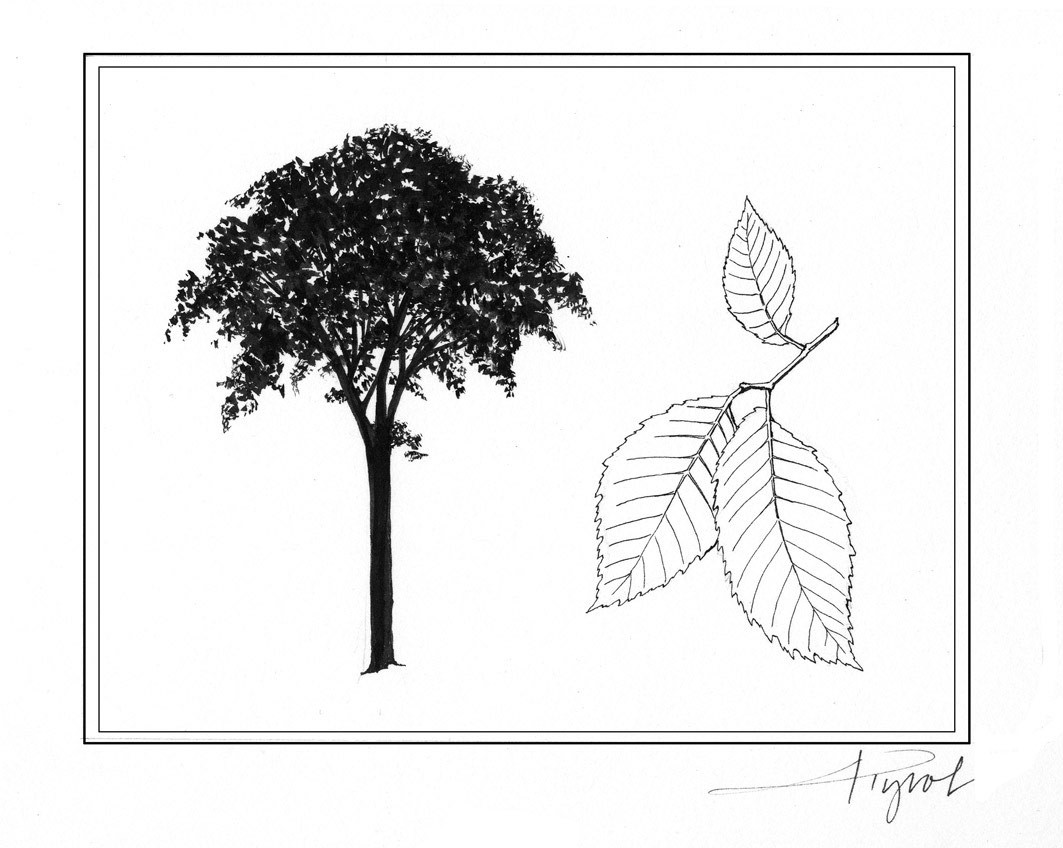
Last June, Rose Paul, The Nature Conservancy’s director of science and stewardship in Vermont, grasped a seven-foot-tall American elm sapling at the base of its trunk, slid a three-gallon pot off its root ball, and planted the tree on The Conservancy’s remote Maidstone Bends Preserve in Maidstone, Vermont. The preserve is on a squiggly section of the northern Connecticut River, 30 miles northeast of St. Johnsbury, Vermont, and 30 miles northwest of Berlin, New Hampshire.
Around the planting site, Paul could see native elms that were little more than saplings themselves. Dutch elm disease strikes down elm trees with rough, furrowed bark, but not young trees, giving them enough time to reproduce. The disease has turned an important, stately species, a favorite in parks and along streets, into a small, scrubby tree of riverside thickets.
The native elms were sign that this is a good place for growing elms. Christian Marks, floodplain forest ecologist with The Conservancy’s Connecticut River Program, selected the site for this elm restoration project by winnowing six sites suggested by Paul using aerial photographs.
A hundred years ago, the floodplain forests along the rivers of Vermont and New Hampshire – in fact, the floodplain forests in all of Northeast and northern Midwest – were heavily populated by American elm. It’s a tough tree that grows quickly and tolerates spring flooding. It can survive dry summers and harsh winters. Its toughness made it a popular street tree and gave Vermont and New Hampshire towns almost as many Elm Streets as Main Streets.
Elm trees are crucial to the floodplain forest, Marks explains. Silver maples are now the dominant floodplain forest tree, and while they are also fast growing, they are generally short-lived. Without elms, there is less shade. So floodplain forests are dominated by fast-growing, sun-loving species, most of which are non-native and many of which are invasives, such as Tatarian honeysuckle, Morrow’s honeysuckle, and moneywort, which are problems at Maidstone Bends. The alien species crowd out native plants and provide poorly for native animals.
Dutch elm disease, a fungus spread by a beetle, which likely reached the United States in imported trees or lumber, was first found in this country around 1930. New England was one of the first regions hit, and by the 1970s, most mature elms had succumbed.
U.S. Forest Service researchers have subsequently tested thousands of elms for resistance to Dutch elm disease, and while they haven’t found a tree that can shrug off the disease entirely, they found six that continued to grow despite infection. Call them tolerant, rather than resistant. The saplings that Paul planted at the Maidstone Preserve were propagated from the Dutch-elm-disease tolerant trees found in that search.
In all, Conservancy staff and volunteers planted a total of 30 elm saplings at the Maidstone Preserve. Thirty more saplings were planted at each of two other Vermont sites, one in Cornwall, along the Otter Creek, and the other in Shelburne, along the La Platte River, as part of the pilot project.
The hope is that the disease-tolerant trees will interbreed with the locals, creating a new generation that is both disease-tolerant and adapted for local conditions. “The future generations will be tough cookies, and will live a long time,” says Paul. The genetic diversity these trees provide may be helpful if another elm disease ever sweeps the continent.
The American elm plantings in Vermont are part of a pilot program to restore elms in four New England states. The Nature Conservancy will be planting more of the disease-tolerant elms this year, and even more next year, says Marks. In addition to Vermont, the trees will be planted in Connecticut, Massachusetts, and New Hampshire, primarily along the mainstem of the Connecticut River.
A few weeks ago, Paul visited the elms planted last year at Maidstone Bends. She was a little worried about whether these “southerners,” with parents from New Jersey, Pennsylvania, Delaware, and elsewhere, would survive a winter that had temperatures dropping to 30 below. She was heartened to immediately see the bright lime-green of the trees’ early-spring leaves. Although the ground was dry, there were signs that the area had been flooded earlier: the trees were festooned with dried leaves and grass nearly to their tops, and about half of them arched downstream, indicating that their finger-thick trunks had been bowed by river currents. A closer look showed that despite the beating, every one of the 30 elms had survived.
It’s a good start. It will take several generations for the genes for disease-resistance and the genes needed for local survival to mix in just the right way, but the project will jump-start natural selection. “We don’t want to wait a thousand years for them to come back to their former role,” says Marks.


Discussion *